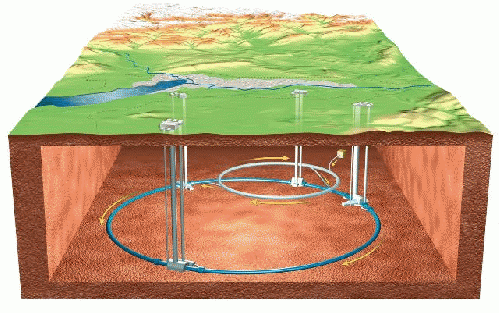After a much heralded start on September 10, the world’s largest particle collider, the Large Hadron Collider (LHC), has been taken down for “a minimum of two months” according to a press statement issued by the European Organization for Nuclear Research, or CERN.
When the experiment was launched on Sept. 10, scientists circled a beam of protons in a clockwise direction at the speed of light, then shut the collider down and turned on a counterclockwise beam. Scientists said the beam made several hundred circuits around the 27-kilometer long underground ring.
On Sept. 11, scientists had succeeded in controlling the counterclockwise beam with equipment that keeps the protons in the tightly bunched stream that will be needed for collisions, but then the first set-back occurred when a power transformer switched off the main compressors of the cryogenics for two sectors of the machine. The 30-ton transformer was exchanged over the weekend.
The collider was briefly brought back into operation on Sept. 18. Then on Friday, Sept. 19, a monitoring system detected a large helium leak within the circular tunnel’s last section. Preliminary investigations indicate that the most likely cause of the problem was a faulty electrical connection between two magnets, which probably melted at high current leading to mechanical failure, according to CERN.
At no time were people involved with the experiment at risk, said CERN.
The LHC is designed to accelerate sub-atomic particles to nearly the speed of light and then smash them into each other to reveal more about the makeup of matter and the universe.
Related:





